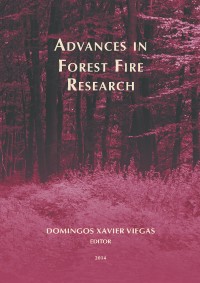Please use this identifier to cite or link to this item:
https://hdl.handle.net/10316.2/34112| Title: | Overview of the 2013 FireFlux-II grass fire field experiment | Authors: | Clements, CB Davis, B Seto, D Contezac, J Kochanski, A Fillipi, J-B Lareau, N Barboni, B Butler, B Krueger, S Ottmar, R Vihnanek, R Heilman, W E Flynn, J Jenkins, M A Mandel, J Teske, C Jimenez, D O’Brien, J Lefer, B. |
Keywords: | Grass fire;field experiment;fire-atmosphere interactions;micrometeorology;fire-induced winds | Issue Date: | 2014 | Publisher: | Imprensa da Universidade de Coimbra | Journal: | http://hdl.handle.net/10316.2/34013 | Abstract: | In order to better understand the dynamics of fire-atmosphere interactions and the role of micrometeorology on fire behaviour the FireFlux campaign was conducted in 2006 on a coastal tall-grass prairie in southeast Texas, USA. The FireFlux campaign dataset has become the international standard for evaluating coupled fire-atmosphere model systems. While FireFlux is one of the most comprehensive field campaigns to date, the dataset does have some major limitations especially the lack of sufficient measurements of fire spread and fire behaviour properties. In order to overcome this, a new, more comprehensive field experiment, called FireFlux II, was conducted on 30 January 2013. This paper will address the experimental design and preliminary results. The experiment was designed to allow an intense head fire to burn directly through an extensive instrumentation array including fixed 42-m and three 10-m micrometeorological towers (Figure 2). The fuels consist of a mixture of native grasses.Each tower was equipped with a variety of sensors, including 3D sonic anemometers, pressure sensors, heat flux radiometers, and an array of fine-wire thermocouples to measure plume temperatures. The experiment was carried out under red flag warning conditions with strong winds of 8 m s-1 and relative humidity of approximately 24%. Instrumentation also included a scanning Doppler wind lidar, microwave temperature profiler, radiosonde balloons for upper-air soundings, a full suite of air quality instrumentation located downwind, and multiple ground and tower mounted infrared and visible video cameras. In addition, the fire spread was monitored from the air using helicopter mounted infrared and visible video cameras. Because the experiment was designed to be conducted under a north wind, the timing of the experimental period only allowed for a northwest wind. This required the instrumentation array to be moved in order to document the fire spread and was a limitation to the experiment. Preliminary results showed that the fire spread rate was ~1.5-2.5 m s-1 for the head fire while the flanks spread at 0.7 m s-1. The surface pressure field indicated that a low-pressure region formed downwind of the advancing fire front. The observations from the 42-m tower show that the strongest fire-induced winds occur a the surface in the cross-wind direction. | URI: | https://hdl.handle.net/10316.2/34112 | ISBN: | 978-989-26-0884-6 (PDF) | DOI: | 10.14195/978-989-26-0884-6_43 | Rights: | open access |
| Appears in Collections: | Advances in forest fire research |
Files in This Item:
| File | Description | Size | Format | |
|---|---|---|---|---|
| 978-989-26-0884-6_43.pdf | 1.89 MB | Adobe PDF |  |
Items in DSpace are protected by copyright, with all rights reserved, unless otherwise indicated.
